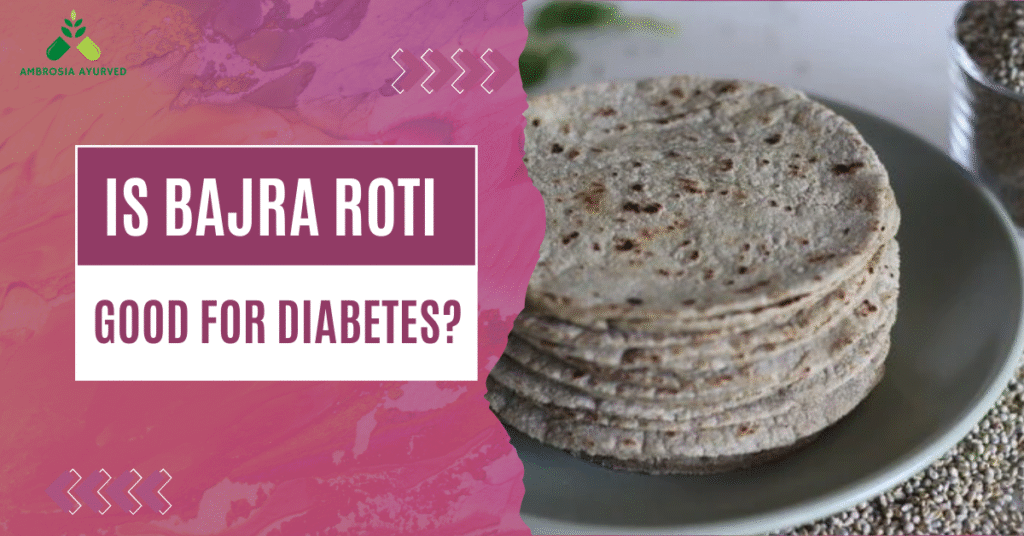Hey there! If you’re managing diabetes, you’re likely always looking for natural ways to support your health. One ancient remedy that pops up often is Mulethi, also known as licorice root. It’s been a powerhouse in traditional medicine systems like Ayurveda for centuries, and it is celebrated for its unique sweetness and medicinal properties.
But when it comes to your blood sugar levels and overall diabetes management, it’s super important to separate fact from myth. Let’s dive deep into the potential benefits of Mulethi for diabetes, what makes it tick, and, crucially, the serious warnings you need to know.
What’s Inside Mulethi?
Mulethi isn’t just a simple root; it’s a complex botanical powerhouse packed with compounds that can interact with your body in significant ways. Understanding these helps clarify how Mulethi affects blood sugar.
Glycyrrhizin: The Star with a Catch
This is the most famous compound in Mulethi, responsible for its distinct sweet taste and many of its medicinal properties. While it offers benefits, its potent effects on hormone regulation mean it’s the primary reason for caution, especially concerning blood pressure and potassium levels in diabetics.
Amorfrutins: Your Potential Blood Sugar Allies
These compounds are gaining a lot of scientific interest for their specific anti-diabetic properties and ability to fight inflammation. They show promise in helping to stabilize blood glucose levels and may even help prevent long-term diabetic complications.
Isoliquiritigenin (ISL): Tackling Inflammation and Insulin Resistance
As a major flavonoid, ISL has been studied for its strong anti-inflammatory and antioxidant effects. Both inflammation and oxidative stress are common issues in diabetes. Research suggests ISL might improve insulin sensitivity and protect organs from diabetes-related damage. This is a key area when considering Mulethi’s benefits for diabetics.
Licochalcone A (LCA): Supporting Metabolic Balance
Found in Mulethi, LCA has shown encouraging results in animal studies. It appears to help improve how your body processes fats and sugars, potentially reducing fat buildup in the liver (a common issue in Type 2 diabetes) and promoting a healthier energy balance. This could contribute to overall metabolic health.

The Potential Benefits of Mulethi for Diabetes Management
With these active compounds, what are the actual benefits of Mulethi for diabetes? While much of the strong evidence comes from lab and animal studies, and some early human trials, the possibilities are intriguing:
Helping to Regulate Blood Sugar Levels
This is often the primary reason people explore Mulethi for diabetes. Compounds like amorfrutins and isoliquiritigenin may actively contribute to lowering blood glucose levels and enhancing your body’s response to insulin. This could mean more efficient use of the insulin your body produces, leading to better glucose control.
Combating Inflammation and Oxidative Stress in Diabetics
Chronic inflammation and oxidative stress are silent destroyers in diabetes, contributing to various complications. Mulethi’s powerful antioxidant and anti-inflammatory properties are a significant advantage. They can help protect cells and tissues from damage, making this a noteworthy benefit of Mulethi for diabetes patients looking for natural support.
Supporting Organ Health Against Diabetic Complications
Diabetes can be harsh on vital organs. Preclinical studies have explored Mulethi’s potential protective actions on organs frequently affected, like the kidneys and liver. By reducing inflammation and oxidative stress, it might help mitigate damage and support diabetic kidney health.
Boosting Gut Health for Better Metabolic Control
An increasingly important area of research links a healthy gut microbiome to overall metabolic well-being. Mulethi has a traditional role in soothing the digestive system, reducing gut inflammation, and fostering a beneficial gut flora. A balanced gut could indirectly support diabetes management and improve nutrient absorption.
Aiding in Healthy Weight Management
Maintaining a healthy weight is absolutely crucial for managing Type 2 diabetes. Some research indicates that specific compounds in Mulethi, particularly its flavonoids, might play a role in reducing body fat and improving cholesterol levels. This indirect support for weight management is another potential benefit of Mulethi for diabetes.
Mulethi as an Adaptogen: Energy and Stress Resilience
You might hear Mulethi called an adaptogen. This means it helps your body adapt to stress, promoting balance and overall vitality. While we don’t have extensive clinical trials specifically on “diabetic fatigue,” its traditional use as a “vitality tonic” suggests it could help combat general lethargy and boost energy levels. For those dealing with the overall fatigue often associated with chronic conditions, this could be a welcome effect.
Crucial Warnings: Why Diabetics Need Extra Caution with Mulethi
Now, this is where we get serious. While the benefits of Mulethi for diabetes sound good, using it – especially the kind rich in glycyrrhizin, comes with very real risks, particularly for those with diabetes.
Read More: Is Jamun Good for Diabetes?
The Risk of High Blood Pressure and Low Potassium
This is the biggest red flag. Glycyrrhizin can interfere with an enzyme that regulates stress hormones, leading to high blood pressure (hypertension), fluid retention (edema), and critically low potassium levels (hypokalemia). If you have diabetes, you’re already at a higher risk for cardiovascular issues, so this effect is incredibly dangerous.
Serious Drug Interactions to Be Aware Of
Mulethi isn’t a lone wolf; it can seriously interact with many medications. This is vital for anyone managing diabetes:
- Diabetes Medications: It could mess with how your diabetes drugs work, potentially causing your blood sugar levels to swing unexpectedly. Some animal studies even hint it might reduce the effectiveness of metformin, though human data is still limited.
- Blood Pressure Medications: Because it can raise blood pressure, Mulethi can counteract the effects of your anti-hypertensive drugs, making them less effective.
- Diuretics (Water Pills): Taking these with Mulethi dramatically increases your risk of dangerously low potassium.
- Blood Thinners (like Warfarin): It might alter how these critical medications are processed in your body.
- Cardiac Glycosides (e.g., Digoxin): Increased risk of toxicity due to potential hypokalemia.
Who Should Avoid Mulethi? (Contraindications)
Certain individuals should never use Mulethi in its glycyrrhizin-containing forms:
- Pregnant or breastfeeding women.
- Anyone with heart conditions (like heart failure, arrhythmias).
- People who already have high blood pressure or low potassium.
- Those with existing kidney disease or liver disease.
- Individuals with hormone-sensitive conditions (e.g., certain cancers, endometriosis) due to its mild estrogen-like effects.
Licorice Candy vs. Herbal Root: A Critical Distinction for Diabetics
This is vital! When you hear “licorice,” you might think of the candy. But commercial licorice candy is usually loaded with added sugars, giving it a high glycemic index (often around 78). Eating this will cause a rapid blood sugar spike, completely undoing any potential benefits of Mulethi for diabetes and putting your health at risk. Always focus on the pure root or extract, if advised by a doctor.
Understanding Safe Dosages and Glycyrrhizin Limits
Using too much Mulethi or using it for too long can lead to severe side effects. High doses (e.g., 5 grams or more of the dried root daily) or prolonged use (several weeks) are generally considered risky. There’s a recommended acceptable daily intake for glycyrrhizin (around 0.2 mg per kg of body weight), which is a very small amount.
DGL Licorice: A Safer Alternative?
DGL (Deglycyrrhizinated Licorice) products are available where the glycyrrhizin has been removed, making them much safer regarding blood pressure and potassium concerns. However, the specific benefits of DGL for diabetes are not as extensively researched or established as those for glycyrrhizin-containing licorice. It’s primarily used for digestive issues.
Final Thoughts
While the potential benefits of Mulethi for diabetes are genuinely intriguing, its active compounds also come with significant physiological effects. This makes it a herb that must be approached with informed caution, especially when dealing with a condition as sensitive and complex as diabetes.
It’s important to remember that “natural” doesn’t always mean “harmless.” Herbs like Mulethi can interact with medications, affect vital organs, and alter hormone balances. That’s why it’s essential to speak with a qualified healthcare provider, Ayurvedic expert, or endocrinologist before including it in your routine.
Self-medicating — even with herbal remedies — can lead to unintended complications. With the right medical guidance, natural options like Mulethi can be explored more safely and effectively as part of a well-rounded diabetes care plan.
FAQ
Is Mulethi safe for all diabetics?
No, not. Due to its potential to raise blood pressure and lower potassium, and its drug interactions, Mulethi is unsafe for many diabetics, especially those with existing heart or kidney issues. Always consult your doctor.
Can Mulethi replace my diabetes medication?
No. Mulethi is a herbal supplement, not a replacement for prescribed diabetes medications. Stopping your medication can have severe health consequences.
What’s the difference between Mulethi and DGL licorice?
Mulethi (licorice root) contains glycyrrhizin, the compound responsible for most of its benefits but also its major side effects (high BP, low potassium). DGL (Deglycyrrhizinated Licorice) has had this compound removed, making it safer for general use but potentially less effective for the specific diabetes benefits linked to glycyrrhizin.
Can Mulethi help with diabetic fatigue?
While Mulethi is an adaptogen that may help with general fatigue and boost energy levels, there’s limited specific clinical evidence linking it directly to the treatment of “diabetic fatigue.” Its benefits are more general, related to stress resilience.




